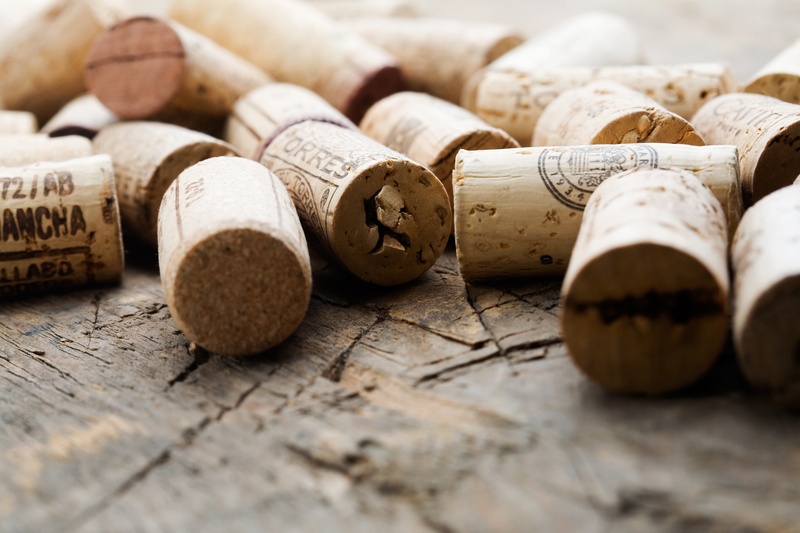Recognizing Plastics You Should Rule Out: A Comprehensive Guide
Plastic is an omnipresent part of modern life. From food containers and bottles to toys and electronic devices, plastics are found everywhere. However, not all plastics are equal when it comes to safety, sustainability, and health. In recent years, there has been growing concern about certain types of plastics that can harm both humans and the environment. This guide aims to help you recognize plastics you should rule out in daily life, understand their risks, and choose safer alternatives.

Understanding Plastics: Types and Identification
Before you can recognize which plastics to avoid, it is crucial to understand the different types of plastics commonly found in consumer products. Plastics are typically identified by their resin identification codes--numbers usually found inside the recycling symbol on the bottom of an item. Here's an overview:
- 1 (PET or PETE): Polyethylene terephthalate, used in water bottles and soda bottles.
- 2 (HDPE): High-density polyethylene, found in milk jugs, detergent bottles.
- 3 (PVC): Polyvinyl chloride, used in pipes, clear food packaging.
- 4 (LDPE): Low-density polyethylene, used in plastic bags, squeezable bottles.
- 5 (PP): Polypropylene, found in yogurt containers, bottle caps.
- 6 (PS): Polystyrene, used for disposable plates, cups, takeout containers.
- 7 (Other): Includes polycarbonate, BPA, and other mixed plastics.
Knowing these codes is the first step in recognizing plastics to rule out from your home and lifestyle.
Why Certain Plastics Should Be Ruled Out
Human Health Risks
Some plastics can leach harmful chemicals into food, drink, and the air, especially when heated or exposed to sunlight. Chemicals such as BPA (Bisphenol-A), phthalates, and styrene are linked to various health issues:
- Endocrine disruption
- Hormonal imbalances
- Developmental problems in children
- Cancer and other chronic diseases
Environmental Concerns
Certain plastics persist in the environment for hundreds of years, breaking down into dangerous microplastics. These pollutants enter our food chain, water supplies, and even the air we breathe. Recognizing and avoiding hazardous plastics significantly decreases your ecological footprint.
The Plastics You Should Rule Out
PVC (Polyvinyl Chloride) - Number 3
One of the most notorious plastics to avoid is PVC. This material is soft and flexible and found in items like:
- Shower curtains
- Plumbing pipes
- Some clear food wrappers and packaging
- Children's toys
Why rule out PVC?
- It contains phthalates, used as softening agents (plasticizers), which are known endocrine disruptors.
- PVC may contain lead and cadmium--toxic heavy metals.
- The manufacturing and disposal of PVC releases dioxins, some of the most toxic chemicals known.
Look for the recycling symbol with a 3 or the letters PVC. If you identify it, substitute it with safer materials like glass, metal, or BPA-free plastics.
Polystyrene (PS) - Number 6
Polystyrene, also known as Styrofoam, is commonly used for:
- Takeout food containers
- Disposable coffee cups
- Packing peanuts and insulation materials
Risks of polystyrene:
- It can leach styrene, a probable human carcinogen, especially when heated or used with oily foods.
- Rarely recycled and persists for centuries in the environment.
- Breaks into small pieces, making it a top contributor to ocean and wildlife pollution.
Whenever possible, rule out using polystyrene by opting for paper, glass, stainless steel, or compostable alternatives.
Plastic #7 - "Other" Category
This category is a catchall for miscellaneous plastics, including polycarbonate, bioplastics, and mixes of various resins. Many contain BPA and similar compounds.
Common uses:
- Reusable water bottles (older types)
- Infant formula and food containers
- Various kitchenware
- Electronics casings
Why avoid plastic #7?
- BPA and related chemicals disrupt hormones and may affect brain development, fertility, and metabolism.
- Not reliably recyclable, ends up in landfills or the environment.
- Lack of transparency--it's hard to know exactly which chemicals are in these plastics.
If you see the recycling code #7, it's wise to rule out these plastics for food or drink purposes and seek clear, safe alternatives.
Black Plastics
Although not assigned a specific resin code, black plastics pose unique challenges:
- They are often manufactured using recycled electronics waste, making chemical content unpredictable and potentially hazardous.
- Most recycling facilities cannot detect and sort black plastics, so they are almost never recycled.
Rule out using black plastics where possible, especially in food-related items such as takeout trays or utensils.
How to Recognize Unsafe Plastics
1. Resin Identification Codes Matter
Always check for the small triangle with a number (1-7) on the item. As a rule of thumb, avoid plastics #3 (PVC), #6 (polystyrene), and most #7 (unless specifically marked as "plant-based" or "compostable").
2. Question Old and Unmarked Plastics
Plastics without codes or from unknown sources can contain any number of hazardous chemicals. It's safest to rule out unidentifiable plastics--especially for food and drink storage.
3. Be Cautious with Recycled Plastics
While recycling is important, some recycled plastics contain a mix of unknown chemicals. Black and dark-colored items are especially hard to recycle responsibly.
4. Heat and Wear Exacerbate Risk
Plastics degrade when heated, scratched, or worn, increasing the risk of leaching. Never heat food or drink in plastics unless they are labeled microwave-safe and BPA-free.
Safe Alternatives to Hazardous Plastics
As you grow more adept at recognizing plastics to rule out, replacing them with safer, more sustainable choices is key.
- Glass: Ideal for food and drink storage, heat-resistant, non-reactive, and recyclable.
- Stainless Steel: Durable, long-lasting, and safe for all types of food and drink.
- Silicone: Food-grade silicone is heat-resistant and flexible, great for bakeware and utensils.
- BPA-Free, Clearly Marked Plastics: When plastic use is necessary, ensure it is labeled "BPA-free" and #2 (HDPE), #4 (LDPE), or #5 (PP), which are considered safer.
- Compostable Bioplastics: Look for code #7 marked as "PLA," but note that not all bio-based plastics are safe or easily composted.
Frequently Asked Questions About Ruling Out Hazardous Plastics
Are all plastics dangerous?
No. Some plastics, specifically HDPE (#2), LDPE (#4), and polypropylene (#5), are widely regarded as safer options for food and beverage use. The key is knowing which plastics pose risks and making informed choices.
Should I worry about plastics in my microwave?
Yes--especially if the plastics are older, not clearly labeled microwave-safe, or fall into the categories to be ruled out. Heating increases chemical leaching, so always transfer your food to microwave-safe glass or ceramic containers when in doubt.
How can I reduce plastic use overall?
- Opt for reusable containers and bags in place of disposable plastics.
- Buy bulk food items with minimal packaging.
- Say no to single-use plastic straws, cutlery, and bags.
- Encourage local businesses to use greener materials.
- Support legislation and recycling programs that promote safe plastics and ban hazardous ones.

Takeaway: Making Smart Choices by Recognizing Plastics You Should Rule Out
In summary, recognizing plastics you should avoid is a vital part of protecting both your health and the environment. Focus on identifying and phasing out:
- PVC (#3) in toys, food packaging, and household items
- Polystyrene (#6) in disposable dishware, foam products, and takeout containers
- Most plastics labeled #7 ("Other"), unless clearly marked safe and plant-based
- Black and unmarked plastics in food or drink containers
The good news is that safer alternatives abound. By making informed choices and ruling out hazardous plastics, you contribute to a healthier home and a cleaner planet. Spread the word, stay informed, and let's move towards a sustainable plastic-free future--one smart decision at a time.
References and Further Reading
- EPA: Types of Common Plastics and Recycling
- FDA: Food Packaging Materials
- American Cancer Society: Bisphenol A (BPA)
- National Geographic: The New Plastics Economy
Remember: Make a habit of checking your plastics, learning their codes, and choosing the safest options for yourself, your loved ones, and the environment. Recognizing plastics you should rule out is the first step toward a safer, greener future.